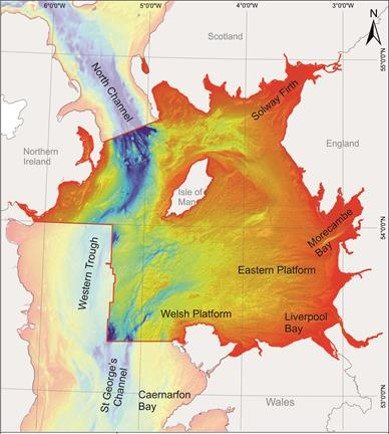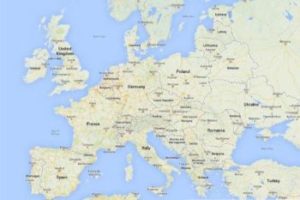

Energy
Crown Estate Publishes BGS Geological Assessment Of Irish Sea
The Crown Estate has published a study by the British Geological Survey summarising the geological conditions of the Irish Sea that will provide a valuable resource for anyone considering development of offshore infrastructure in the region.
The study follows The Crown Estate’s publication of a wide range of data collected for the discontinued Celtic Array offshore wind farm, such as geotechnical and geophysical data as well as sediment sampling (available on the Marine Date Exchange). BGS undertook a detailed assessment of the Irish Sea, combining the Celtic Array data with the best available data from other sources, such as BGS legacy data, regional reports and site investigations by other industries.
The assessment is intended to provide an introduction to developers interested in the region to help inform broad decisions as to ground suitability, highlighting a range of geological factors to be considered in development activity located at a depth of between 0 and 50m of seabed.
Will Apps, Development Portfolio Manager at The Crown Estate, said: “By working in partnership with the BGS and development partners, we are harnessing the power of open data to help build a picture of this natural resource for different marine users. By making information easily available through the Marine Data Exchange we can help stimulate research, support academia and contribute towards the sustainable development of this part of the seabed, with the ultimate intention of unlocking value over the long term.”
Keith Westhead, Principal Marine Geologist at the British Geological Survey, said, “This collaboration with The Crown Estate is an excellent example of how our regional assessments of the seabed can be greatly improved through use of newly available high-resolution site investigation data. We were also able to work with researchers at Bangor and Liverpool universities, who had previously examined the Irish Sea data, to build on our existing knowledge and data to provide this enhanced geological assessment. We aim through such approaches to increase the application of geoscience to support offshore development and research across the UK Continental Shelf area.”
The study area (as shown) incorporates areas of the seabed extending up to the present day coastline within in the UK and Isle of Man waters. The assessment considered nearly 23,500 km² and summarises topography, sediments and processes; the Quaternary history and its impacts; and a review of bedrock distribution and properties.
The report will be hosted on the Marine Data Exchange, which also provides access to wider environmental survey data and reports collated during the planning, building and operation of offshore renewable energy projects. It will also be made available through the NERC Open Research Archive (NORA).
The Crown Estate is an active asset manager of the UK seabed to unlock value from this natural resource, including awarding leases for offshore energy, marine aggregate extraction and cables and pipelines.


 Environment10 months ago
Environment10 months agoAre Polymer Banknotes: an Eco-Friendly Trend or a Groundswell?

 Environment11 months ago
Environment11 months agoEco-Friendly Home Improvements: Top 7 Upgrades for 2025

 Features8 months ago
Features8 months agoEco-Friendly Cryptocurrencies: Sustainable Investment Choices

 Features10 months ago
Features10 months agoEco-Friendly Crypto Traders Must Find the Right Exchange



























